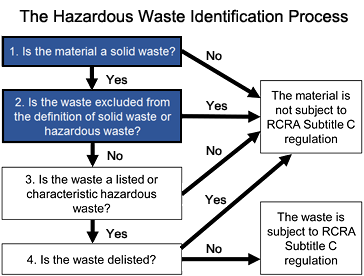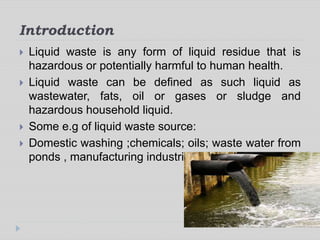The Only Guide for Reclaim Waste
The Only Guide for Reclaim Waste
Blog Article
Not known Details About Reclaim Waste
Table of ContentsThe Single Strategy To Use For Reclaim WasteA Biased View of Reclaim WasteReclaim Waste Can Be Fun For EveryoneFascination About Reclaim WasteReclaim Waste Things To Know Before You Buy
Check out the kinds, incidents, and types of fluid waste. Residential sewer waste describes the waste and products from a property sewage-disposal tank. This kind of waste is produced by human beings in homes, schools, and other buildings. This only consists of sewage-disposal tanks that have a drainpipe area. The correct administration and disposal of domestic sewage waste call for liquid waste to be moved to a sewage therapy plant where the correct approaches and devices are used to purify and deal with waste.
Business waste often consists of prospective hazards, such as flammable materials or a combination of fluid and strong waste items, and requires an advanced and detailed disposal procedure. The disposal of business waste normally includes the purification of waste before transportation to make sure safe and appropriate disposal. Industrial waste is developed from byproducts and overflow of industrial processes and production.
This kind of waste can not utilize the exact same sewage administration transport or processes as septic or industrial liquids. The industrial waste management procedure calls for the evaluation and testing of liquid waste prior to it undergoes the disposal process (liquid waste removal melbourne). Runoff waste is the liquid waste that originates from runoff and excess stormwater in highly booming locations or cities
Overflow waste can cause contamination and flooding if not dealt with properly. Discover more regarding sewer cleansing and waste monitoring. Guaranteeing appropriate waste monitoring can stop calamities and decrease ecological injury. Both people in domestic setups and professionals in commercial or production sectors can take advantage of comprehending the processes and regulations of fluid waste management.
The 6-Minute Rule for Reclaim Waste
Contact PROS Services today to discover our waste administration and disposal solutions and the proper ways to take care of the liquid waste you produce.
(http://www.askmap.net/location/7161699/australia/reclaim-waste)This supposed 'wastewater' is not only an essential source however, after treatment, will certainly be launched to our land, waterways or the sea. Made use of water from toilets, showers, bathrooms, kitchen area sinks, washings and commercial procedures is understood as wastewater.

water made use of to cool equipment or clean plant and devices). anchor Stormwater, a type of wastewater, is drainage that moves from farming and urban locations such as roofing systems, parks, gardens, roads, paths and rain gutters into stormwater drains pipes, after rainfall. Stormwater moves untreated directly to regional creeks or rivers, eventually getting to the ocean.
Examine This Report on Reclaim Waste
In Queensland, a lot of wastewater is dealt with at sewer treatment plants. Wastewater is moved from domestic or commercial websites with a system of sewers and pump terminals, understood as sewerage reticulation, to a sewer therapy plant.
The Division of Natural Resources recommends neighborhood federal governments concerning handling, operating and preserving sewage systems and treatment plants. In unsewered areas, city governments might need homeowners to install individual or home sewage treatment systems to deal with residential wastewater from bathrooms, kitchen areas, restrooms and laundries. The Division of Natural Resources authorises using home systems when they are verified to be effective.
In some new neighborhoods, treatment of some stormwater to get rid of litter, sand and gravel has begun making use of gross toxin catches. Wastewater treatment occurs in four stages: Gets rid of solid issue.
Wastewater after that streams into big containers where solids resolve and are eliminated as sludge. Oil and residue are skimmed from the surface area. Utilizes tiny living microorganisms knows as micro-organisms to break down and eliminate continuing to be dissolved wastes and great particles. Micro-organisms and wastes are integrated in the sludge. Removes nitrogen and phosphorus nutrients that might create algal blossoms in our waterways and endanger aquatic life.
Reclaim Waste - An Overview
Nutrient elimination is not available at all sewage treatment plants due to the fact that it needs costly specialist tools. Clear fluid effluent generated after treatment might still contain disease-causing micro-organisms - liquid waste removal.

This usually means wastewater has to be dealt with or pollutants eliminated prior to it can be released to waterways. The majority of wastewater moves right into the sewerage system. Under the Act, city governments provide approvals and licences for ecologically relevant activities (ERAs) involving wastewater releases that may have a neighborhood influence. The department provides approvals and licences to ERAs involving wastewater launches that might have a local or statewide influence.
What Does Reclaim Waste Mean?
Otherwise, samples are considered research laboratory evaluation. Commonly lots of tests are required to develop the levels of each of the different pollutants such as oils, heavy metals and pesticides in water. Tracking provides valid details concerning water top quality and can validate that licence conditions are being fulfilled. The details gotten with surveillance offers the basis for making water top quality decisions.
Report this page